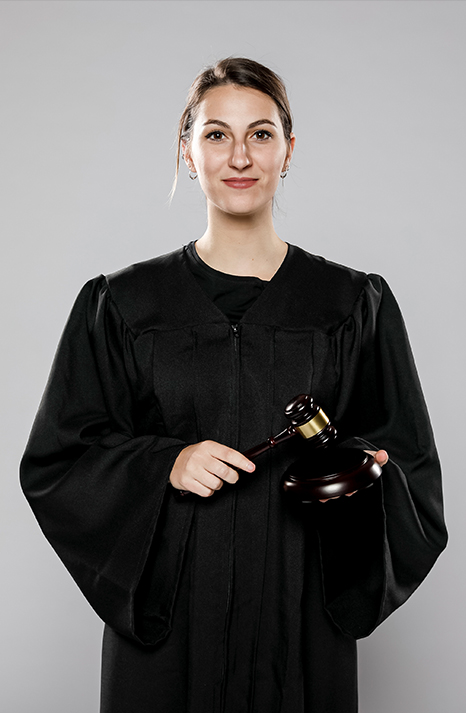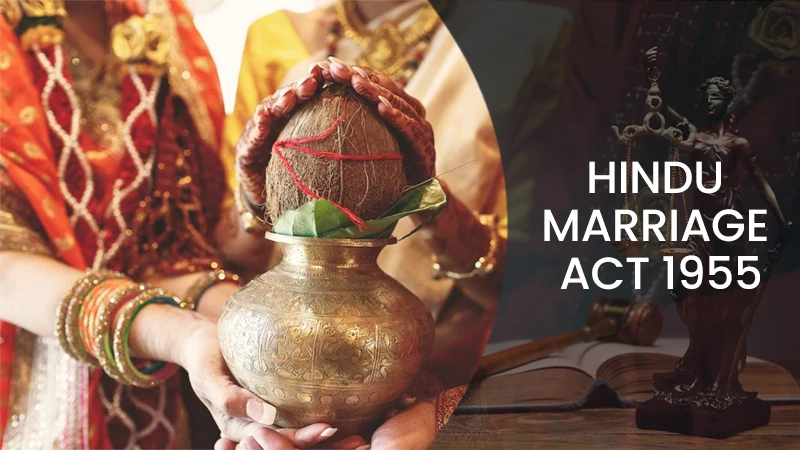

Marriage is considered to be a holy custom in India. The Indians have faith in solemnizing marriage through rituals and customs. People are usually unsure and uncomfortable going through the legal route for bringing marriage into existence. Most of the people are not even enlightened about the provisions of marriage laws stated in the Indian constitution.
India is primarily a Hindu-dominated nation. Consequently, Hindu marriages are mainly governed under ‘The Hindu Marriage Act,’ that was incorporated on May 18, 1955. For other different religions, the law comprises a different type of Marriage Acts.
The Hindu Marriage Act, 1955 was proposed to protect the rights of marriage for the couples who are Hindu and are bound under the religious bond of marriage. This law doesn’t impose a particular way to solemnize the marriage as there are several ways a couple can perform this religious act.
This act came in the limelight after a few cases were seen where the couple was frightened or offended in the deceit cases of marriage.
Hindu Marriage Act, 1955 is compulsory to every individual who is Hindu, Jain, Sikh, and Buddhists and is definitely not a Muslim, Christian, Parsi, Jew or any other community which has a different law-set.
This law is obligatory to any individual who is Hindu by Birth or Hindu by Religion. There is adequate information about Hindu under Section 2 of the Hindu Marriage Act. This law was introduced to evade the several concerns which were prevailing due to undeveloped Hindu law for marriage under British Rule.
Section 2 of Hindu Marriage Act, 1955:
According to Section 2 of the Hindu Marriage Act, 1955, Hindu marriage can be solemnized between two persons, who are Buddhist, Sikh, or Jain. The bond between those two considered as Hindu marriage.
Section 3 of Hindu Marriage Act, 1955:
Section 3 of Hindu Marriage Act, 1955 rescinded the illegal degrees of relationships which were mentioned in Smritis and have defined the certain new prohibited degree of relationships e.g. A person cannot marry his brother’s wife. Though, this provision shall not apply in case of divorcee and widow women.
Section 5 of Hindu Marriage Act, 1955:
According to Section 5(ii) and (iii) of the Hindu Marriage Act, 1955, the Hindu marriage is considered not only as religious but more of an outcome of mutual consent.
Provisions under Section 5 of Hindu Marriage Act, 1955:
According to Section 5(ii) and (iii) of the Hindu Marriage Act, 1955, the Hindu marriage is considered not only as religious but more of an outcome of mutual consent.
Section 8 of the Hindu Marriage Act, 1955:
Section 8 of the Hindu Marriage Act, 1955 has presented the provision of registering the marriage under this Act.
Section 9 of the Hindu Marriage Act:
Section 9 of the Hindu Marriage Act, 1955 separates the marital rights of husband and wife.
Section 15 of the Hindu Marriage Act:
Section 15 of Hindu Marriage Act, 1955 declare that after a valid divorce both parties are eligible to re-marry.
Section 16 of Marriage Act, 1955:
Section 16 of the Hindu Marriage Act, 1955 defines the legality of children born out of the coalition and can be consequently declared annulled or void or voidable.
Section 17 of the Hindu Marriage Act:
Hindu Marriage Act, 1955 include Monogamy and firmly prohibits a Hindu from getting married from more than one person at the same time. In case, if it is proved, the person will be punishable under the Indian law as per provisions under Section 17 of Hindu Marriage Act, 1955.
Section 24 of Hindu Act, 1955:
Section 24 of Hindu Marriage Act, 1955 defines the provision for the expenses of legal proceedings during a divorce process.
Hindu Marriage Act Section 25:
Section 25 of Hindu Marriage Act, 1955 defines the complete provision of alimony and permanent maintenance for the marriage under this Act.
Section 26 of Hindu Marriage Act, 1955:
Section 26 of Hindu Marriage Act, 1955 describes the provisions for custody, maintenance, and education of minor children during and after legal proceedings of divorce.
The Hindu Marriage Act, 1955 is sanctioned to improve and arrange the law related to marriage among Hindus. The following are the main features of the Hindu Marriage Act, 1955.
